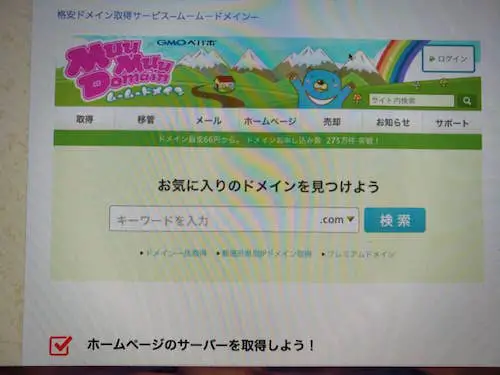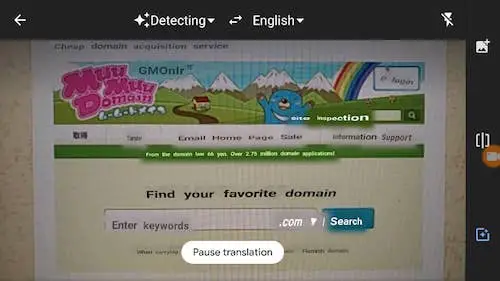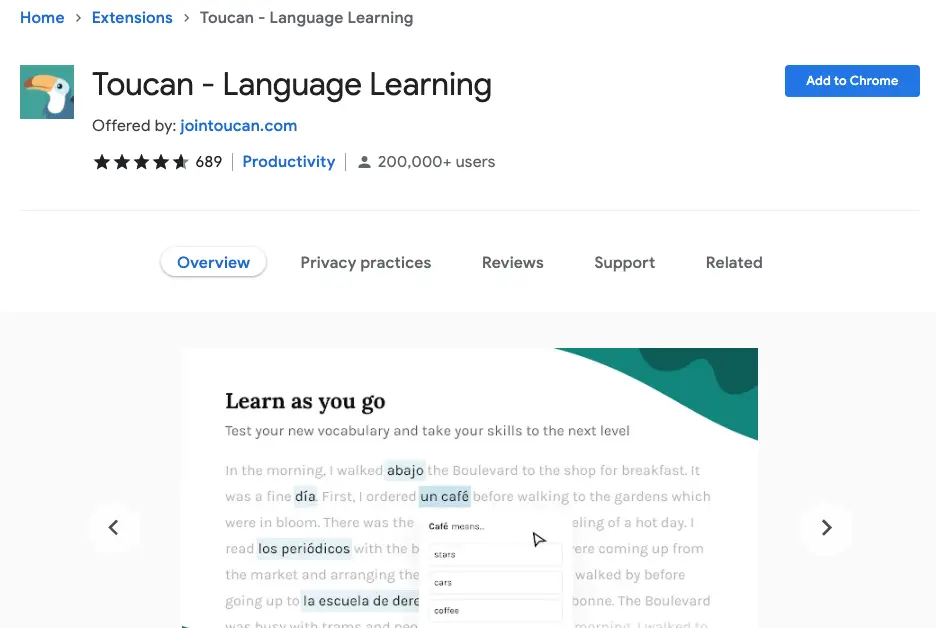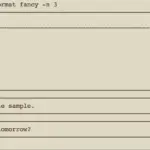Learning a new language can be a challenging task, considering the fluency of high-level mastery for book authoring and professional translations or occupational communication. I am hoping to figure out what can really help us to learn a language, whether for the novice, intermediate, or advanced learners, but this piece targets language hobbyists more in particular.
How to take notes for language learning?
- Common words and conversations
- Translator’s device or service
- Post-it notes on household stuff
Before you dive into the different points, please take a short moment to consider: Am I still physically energetic, smart, and alert enough to focus and memorize a whole new language for my intended purpose? Answering this pragmatic (not self-defeating) question may save you lots of time and effort or clarify whether you are on the right path. Generally speaking, youths have sharper mental acuity and the ability to focus on learning without as many external distractions and demands as working adults.
Questions to help us ascertain our language learning motivation:
- How can we develop more interest in learning a difficult language?
- Why should we continue to persist? (The reasons should be good, strong, and sustainable)
- What are the benefits that I can bring to others with learning this language?
- When can I expect fluency for the intended purpose?
- How can I incorporate games and intrigue into the learning?
- What is it that we want to accomplish by learning this new language that we cannot already do in our native language?
Common words and conversations
Start small, with basic vocabulary words and phrases. Why? We need to build both confidence and a learning base upon which we may apply and expand out. Another reason is to evaluate if that language hobby is a good fit for us before we go further.
Take notes by focusing on common words and daily conversations first to apply later. We prefer ordinary words and phrases because we may likely forget what is not used. This is the top reason why we do not remember what we learned in my humble opinion. This dated article expressed the wish of some Japanese to learn Chinese, however, fluency is scarce because there are too few Chinese speakers in Japan. What we can learn from this lesson is to be practical and plan ahead to evaluate if we can apply an acquired knowledge or language consistently in an environment. In other words, what use of knowledge if we cannot apply them? Those who learned advanced subjects and topics such as differential calculus or special relativity in higher education but has no need for them at all in later work-life may better appreciate the sentiment here. This may be the foremost reason why we cannot attain fluency in learning a new language. On the other hand, suppose we are in frequent contact with a foreign language speaker such as a partner or close friend, the chances of learning his or her language may increase dramatically.
Memory for recalling is crucial in learning a language because we need to first remember enough times before we can talk about fluency. For those studying for exams, a book and video course that may help you pass exams can be found on Amazon and Udemy.
Note-taking exercise
To start with common words and phrases, just take notes of our basic words and conversations in our native language that you use or come to mind. Then translate each and note down for review.
Example list of common words and phrases:
- Hello
- Good morning
- Good afternoon
- Good evening
- Bye
- Take care
- Thank you
- Sorry
- Excuse me
- I think that…
- She said…
- He asked…
- Let’s go
- Please do
- Please do not
- We should rest
- They want to drink tea
- She likes shopping
- He wants to buy a shirt
- Breakfast
- Lunch
- Dinner
- Sleep
- Father
- Mother
- Brother
- Sister
- Son
- Daughter
- Help
- Doctor
- What is that?
- How to say this in x language?
- Why?
- When?
- Train station
- Bus station
- Police station
- How do you feel?
- I feel fine
- I am tired/sick
- Happy or sad
- Hospital and doctor
- Car
- Phone
- Bicycle
- Walk
- Hotel
- Food
- Bread
- Fruits
- Water
- Grocery store
- Time of day from 6 a.m. to 12 p.m.
- Numbers from 1 to 100
- How much is this?
- How many?
- Shower
- Hot
- Cold
- Soap
- Laundry
- Airport
- Home
- What is that place?
- Please tell me how…
- Please speak slowly
- Can you speak English, please?
- Map
- Taxi
- Left
- Right
- Straight ahead
- Turn
- More, please
- Less, please
- Yes
- No
- May I have some?
- Please bring me some.
- I would like to have some.
- I am not sure
- I do not know
- Okay
Add on to this list beyond the most absolute necessities for traveling, communication, or even survival. You may use this list for all language learning as the hobby base. Please note that this basic list should be kept to a bare minimum so we do not want to overwhelm ourselves early on, especially for novice learners.
One way to learn a language is to expand out from this basic list into more vocabulary words and longer phrases, like branching out from the tree trunk to multiple branches and each then to numerous leaves.
For example from the word Airport:
- Plane
- Counter
- Passport
- Luggage
- Trolley
- Ticket
- Arrival hall
- Departure hall
- Duration of flight
- How far from the hotel?
- How long to reach the airport?
- What is the currency exchange for USD?
From the word Plane above:
- Seat
- Window and aisle
- Meals
- Vegetarian and vegan
- Snacks, drinks, tea, and coffee
- Cabin crew, steward and stewardess
- Pilot
- Departure and arrival time
- May I know how long before estimated arrival?
- Where to get public transport after?
- What is the best way to go …?
- Pillow and blanket
- Lights out
- Please wake me up at …
- Toilet
- Internet, wifi, and phones

Whether we call it outlining, branching out, mapping, or associating, the concept here is to start from a familiar base and expands out to cover more grounds, and eventually we may just reach a point where it is at least enough to serve our communication purpose. Learning common words and phrases is a natural process for us as we start learning from the simplest of words like ‘Mom’ and ‘Dad’ since infancy and thus can be the most beneficial takeaway for readers of this post, so please heed.

Translator’s device or service
A translator device, service, or app can help to translate back and forth for understanding or check if your translation is correct. For example with Google Translate, we can read the translation and even hear a good audio play of the translated text. We can click History to easily access our previous translations for learning, or Star to save selected translations and then export them together to a Google spreadsheet that can be saved into our notes. Those we can enjoy learning while traveling or taking notes of anything they encounter may find this method handy for learning a new language or two, including those who prefer an auditory learning style by speaking into a microphone and hearing the translation. Please note that Google Translate App has a handy camera function that supports instant, scan, and import functions. Instant is very handy when one needs fast translation with a camera screen (may need seconds to process) where the app simply replaces the screen words with translated words on the spot. The scan function will capture the camera shot and let one use the finger to highlight which portion for translation. You might not need a dedicated translator’s device if you have Google Translate App on your smartphone.


A good device can also take photo translations with character recognition; This may also be useful for travelers who can take photos of road signs and maps or speak into it so passersby can listen to the translation. With a handy device like this, is there a further need for a casual traveler to learn a new language?

A way to learn a language with a translator device or app is to pick up your favorite book (and preferably not one too archaic), and speak one word or sentence at a time to understand the translations. One may want to consider children’s books to start with for a novice learner. Set a goal to learn a few words, sentences, or a paragraph a day till you finish the whole story.
Alternatively, one may write down and record audio notes repeatedly to memorize one sentence and at least 5 words a day.
Post-it notes on household stuff
This is a pragmatic and simple but effective idea that will require some implementation effort. After all, generally, we spent much of our time at home and these house and room objects are all there free for our labeling use. Each note can have a few language translations together and each time we see the note, an impression of it is registered. We may add on to more complex, complicated, abstract or subtle learning notes like verbs, grammar, proverbs, and full sentences to more familiar places and stuff, including a whiteboard when we feel confidently familiar with existing notes. Imagine how much we can learn just from this simple labeling habit by spreading out the languages notes for a year or even a few years. At least we can build confidence with some basic words even if we just put this simple practice to use once! One may also learn techniques for rapid problem solving with Post-it notes.

Bonus tips to help with learning new languages:
- One word in different languages

We may take notes on photos, flashcards or note-taking bookmarks. Learn the same word in different languages. This may work well for aspiring polyglots or just language hobbyists learning 2 new languages at the same time. This makes learning more efficient in my opinion and makes it possible or easier to become a polyglot in a shorter time.
Travelflips flashcards – Chinese Japanese Korean Spanish French German Italian Russian
Construct a short sentence for each word. Writing one word for each blank flashcard can help to segregate and focus on learning that one word. Or a good idea is to write that word on a note-taking bookmark that you can use to remind yourself of that word upon seeing. One may write on several such bookmarks for multiple words or a Write-&-erase plastic bookmark so we may take backup photos before erasing; The advantage of such a bookmark is that it might force us to review with more vigor before we erase.

Alternatively, teachers creating for class learning can scan their students’ raised Plickers cards on the spot at one go for students’ results scoresheet and report. This is quite useful or innovative for class engagement and helps students follow your class with simple cards and the Plickers app. Also, it saves time and resources by handing out and collecting papers every time.
With a digital pen pal system, you can write notes to others at your own leisure without deadlines and the freedom to stop writing anytime. With digital delivery, you can send and receive letters faster. Slowly is also gamified with a stamp collection. HelloTalk may be more suited for intermediate and advanced learners.
- Plan for a comprehensive language learning curriculum
We should plan ahead our education so we do not stop our learning momentum or give up simply because we do not know how to continue our studies (especially for language hobbyists). We may plan well from our first book to the last, but my humble suggestion is to acquire one book for concentration at a time without overcommitting yourself.
Let’s take for example you plan to study Japanese, and after scouting around for a fun but a comprehensive and advanced path to complement Memrise, one may acquire the first book from TRY! JLPT N5 – N1 book series with CDs or vocabulary books N4/N5 – N1 as part of your study regimen.
- Memrise
Take notes from Memrise’s questions and difficult words. Why Memrise? There are language learning courses ready-made by the Memrise team, so we can leverage their experience and expertise. Memrise courses are gamified with leadership scores for encouragement. Writing down the questions and in particular, the difficult ones can help enhance our learning by picking on our weaknesses. You may also create your own Memrise set from the basic list above, and share it with others for learning.
- Make your language learning fun!
This may be the last tip but having fun and entertainment with learning may also be one of the most significant factors in moving forward and growing one’s interest & knowledge for a lasting language learning relationship, just like humor can emotionally bond couples together. There is perhaps no bigger obstacle than losing interest and simply giving up altogether. We should also plan out how we can learn with fun along with discipline over the long run. Strike a harmonious balance between entertainment and motivation. For example, we can learn to take language notes with fun activities or games, and Travelflips flashcards may enhance our learning interest. Have fun learning yet for an altruistic goal.

Bonus One: LyricsTraining
As I was writing the new post: LINE Memo / Keep app for notes, I discovered the LyricsTraining app for language learning. This can be a game-changer for language learning, especially if having fun and relaxation while learning is a big motivator for you!
Another useful gadget that may prove useful in your language learning studies is this pen translator.
Bonus Two: iTourTranslator
With this app, students and adults can communicate in multiple languages in live phone calls and WhatsApp calls. Message text and text in pictures translation are also supported too. International students may use the app to read a live lecture taught in a foreign language!
Conclusion
Whatever you do with a language, do not make it a chore. Realize that languages, like computers and modern gadgets, are just a tool or mean to help us accomplish an end.
Learning a new language is not an easy task by ordinary standards, and our goal is to attain fluency where we can converse and write to express ourselves accurately and instantly without stumbling over every single word. Our sustained interest, discipline, planning, resources, and motivation along the way can all make a difference to language success.
Hopefully, one learns a language for a good cause; Whether we are professionally translating for a world peace conference or writing a news report in a foreign language advocating animal rights, we should always put others before ourselves. Good luck with your new language learning journey!
Related Questions
Is there a Chrome extension to help with language learning?
Toucan is a popular Chrome extension to help learn a language while browsing the internet. There are multiple languages available.

Are there any resources for learning sign language?
Sign language flashcards and Memrise course.
Are there any language learning planners available?
Language study planner and digital language learning planner. Being organized can be essential to help us stay focused and on track.
Is there any good and low-cost text-to-speech service?
Please read Good Affordable Text-To-Speech Narration For Business And YouTube.







